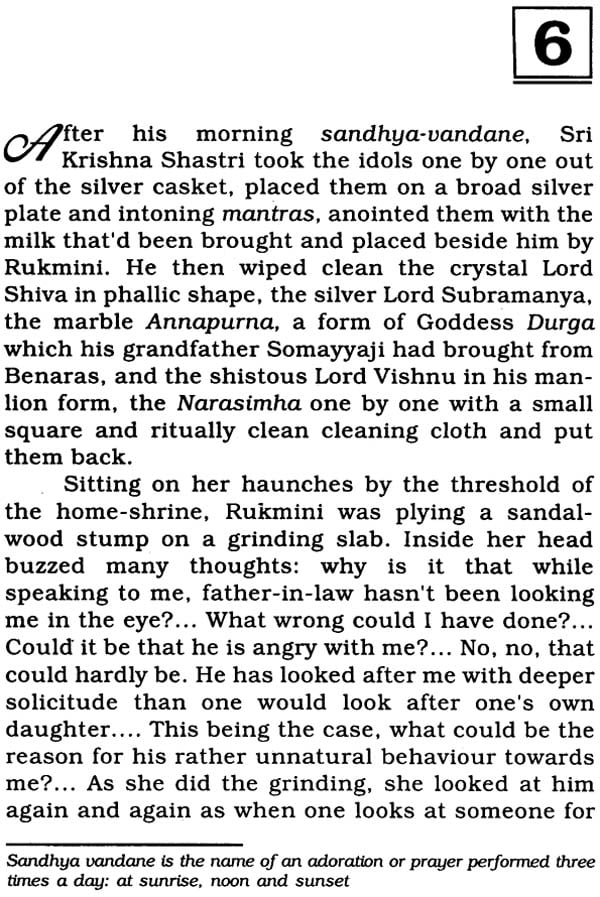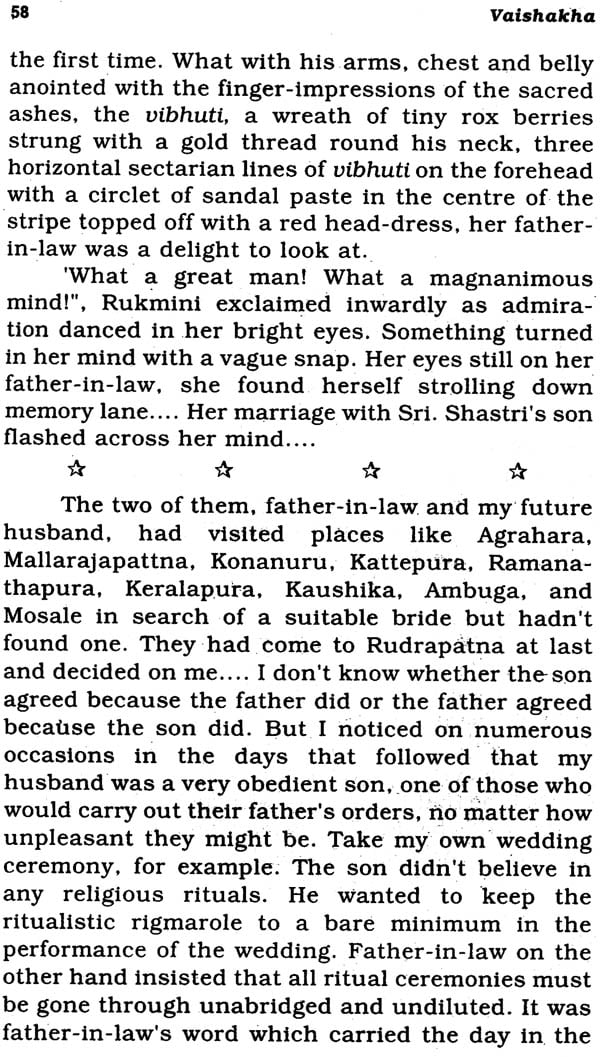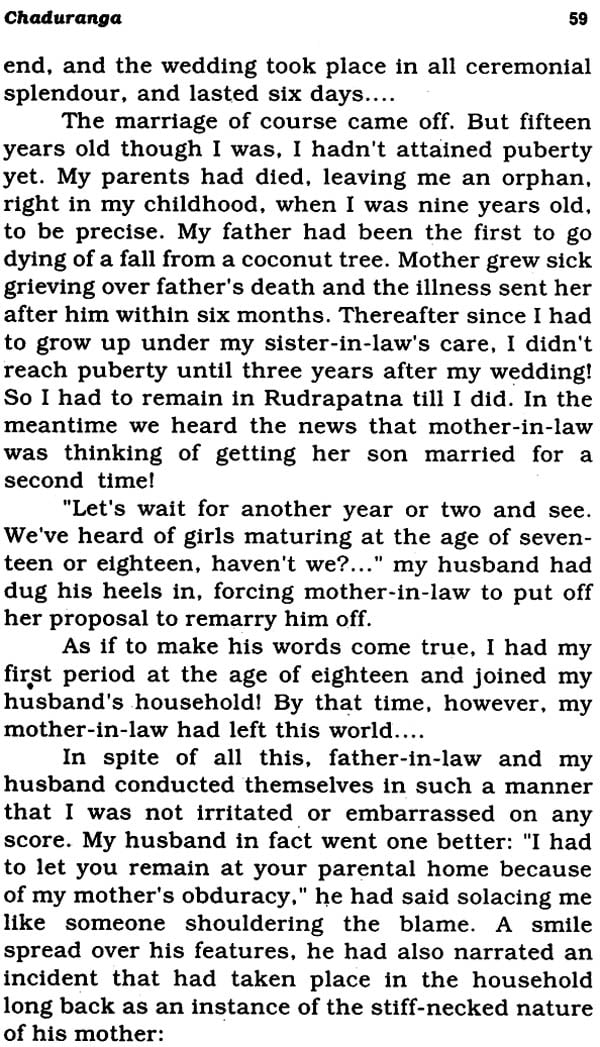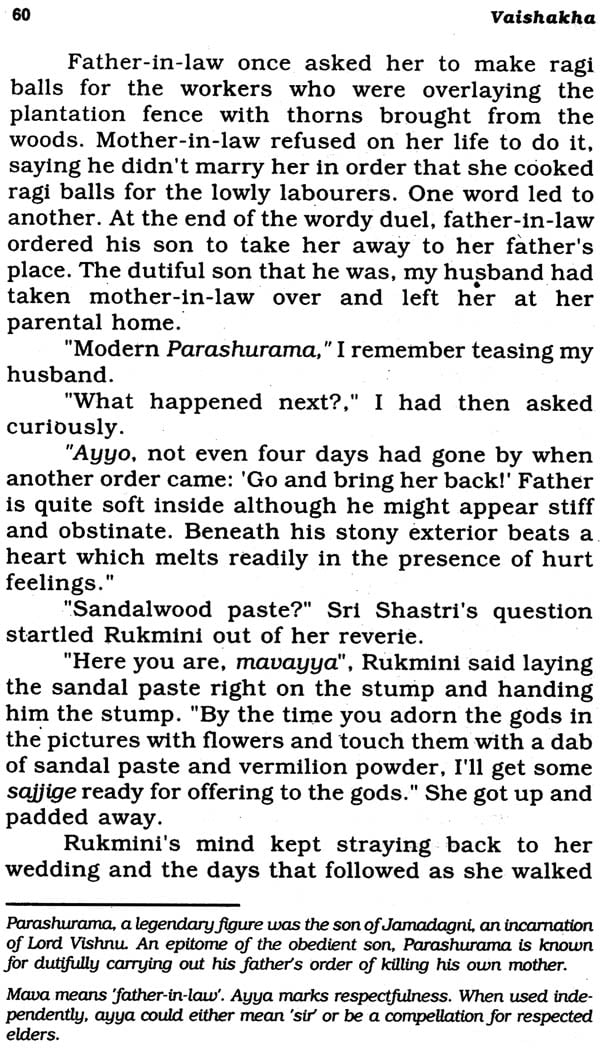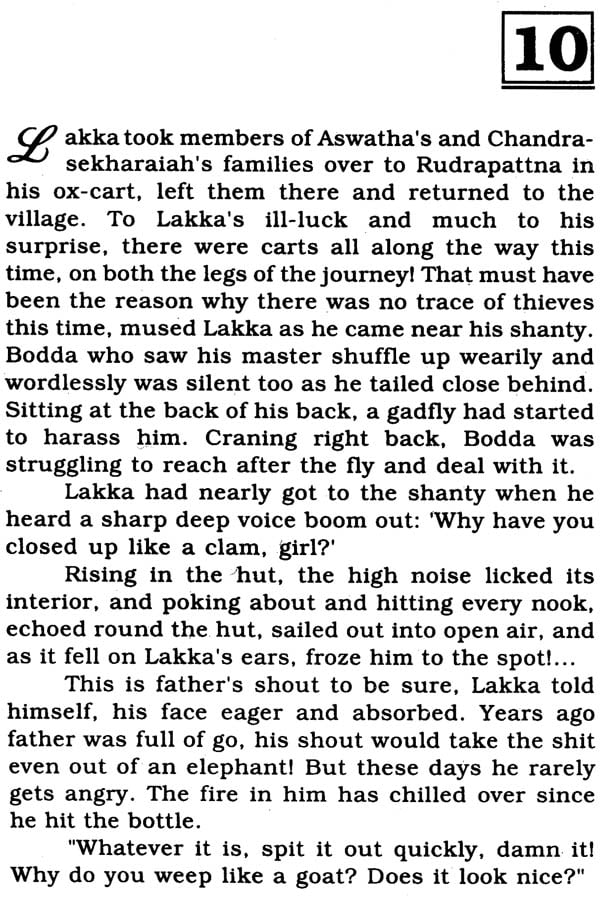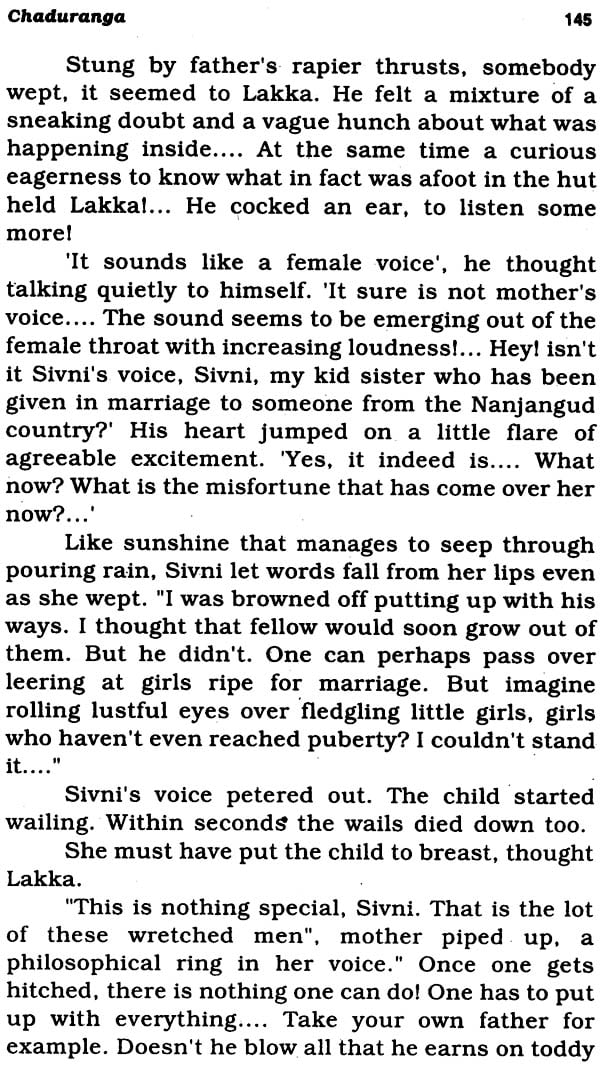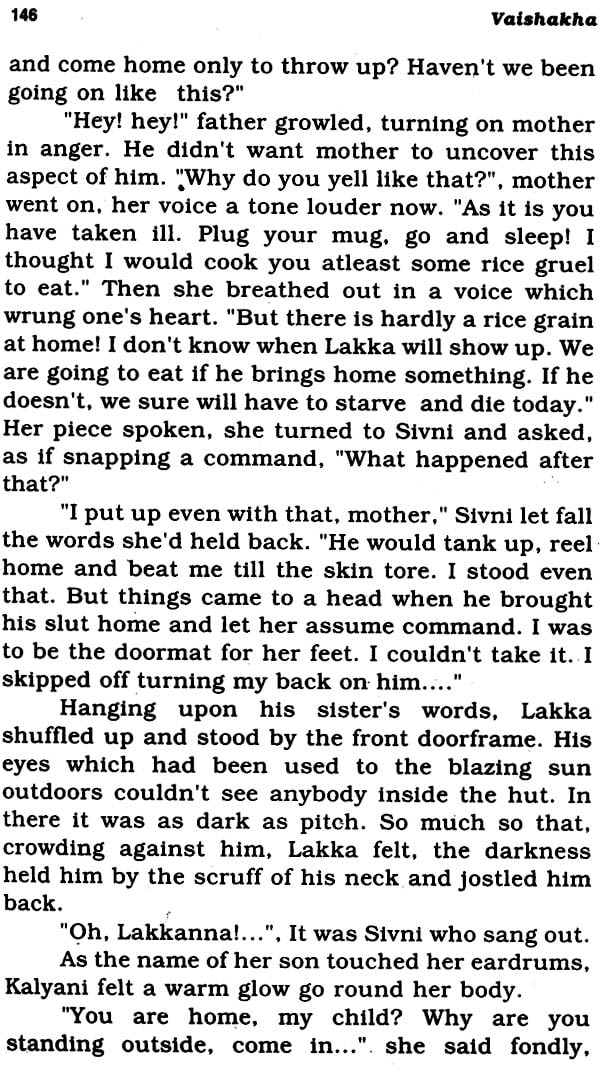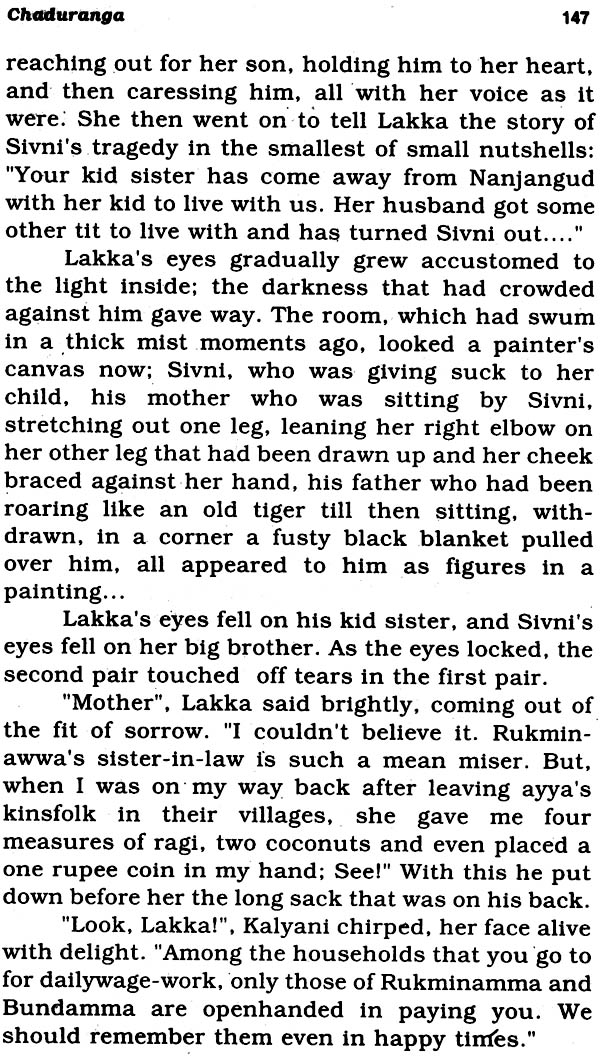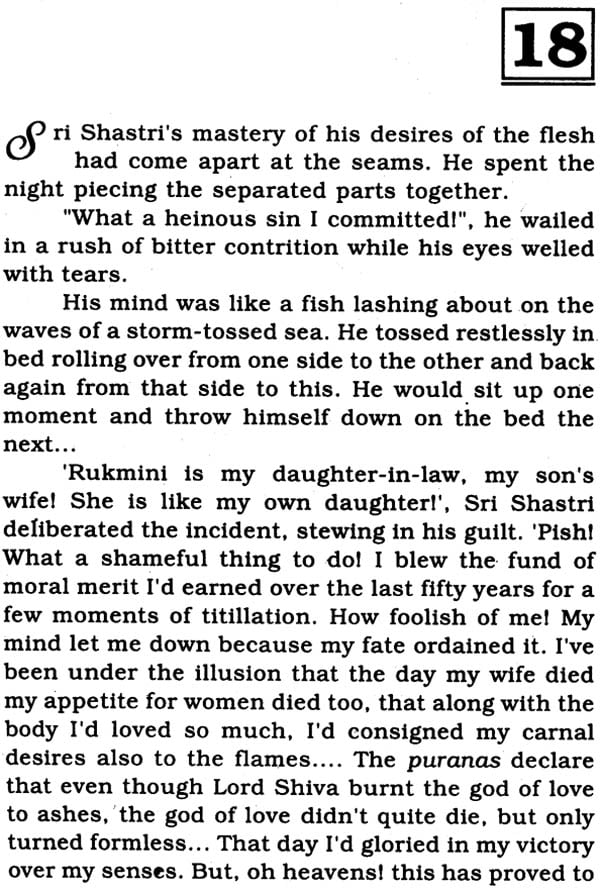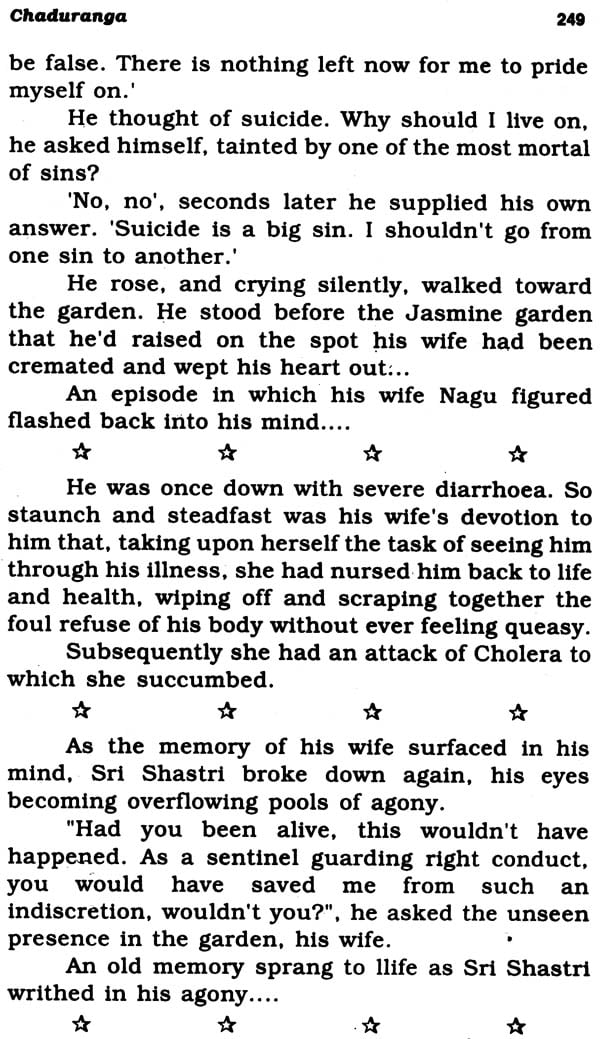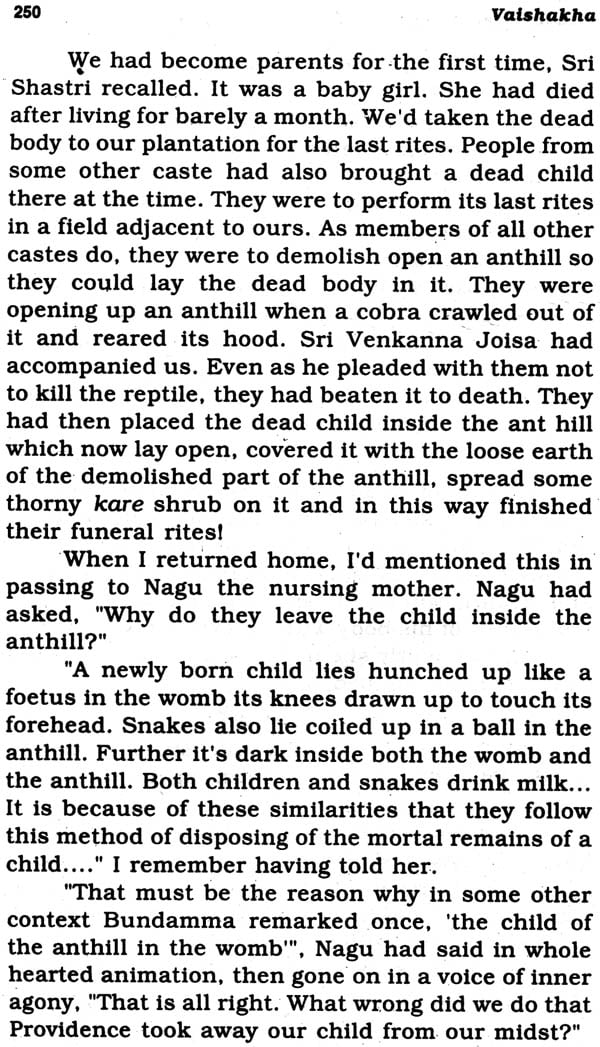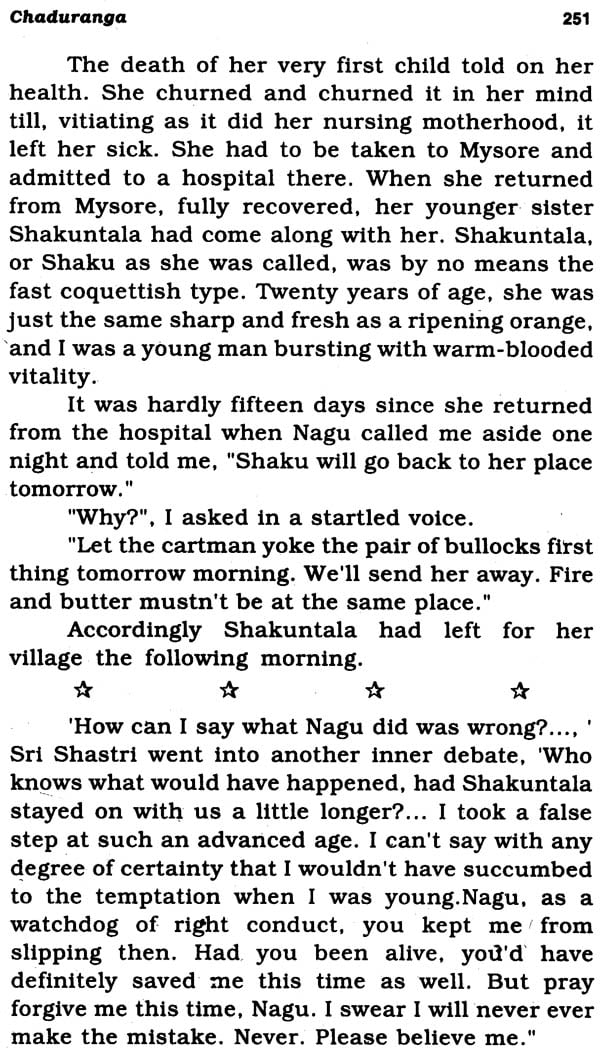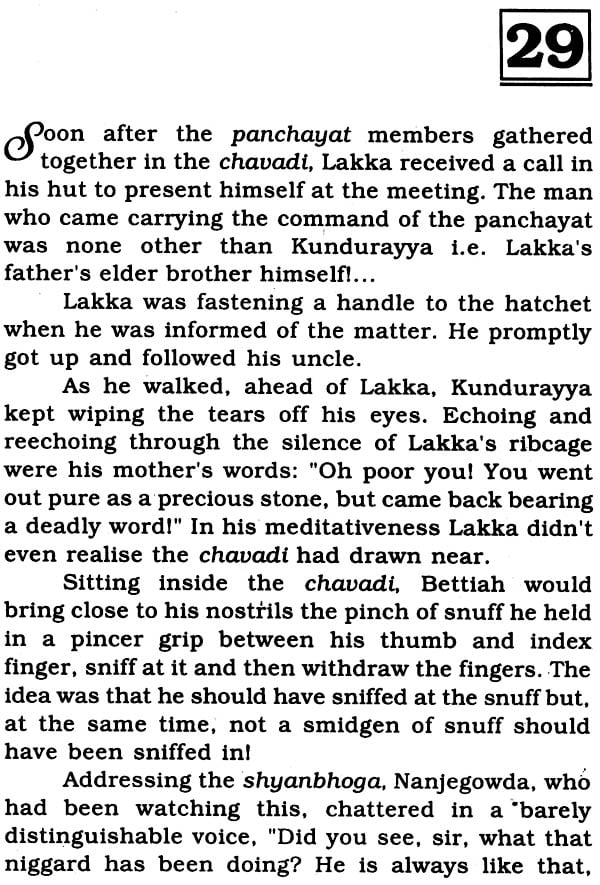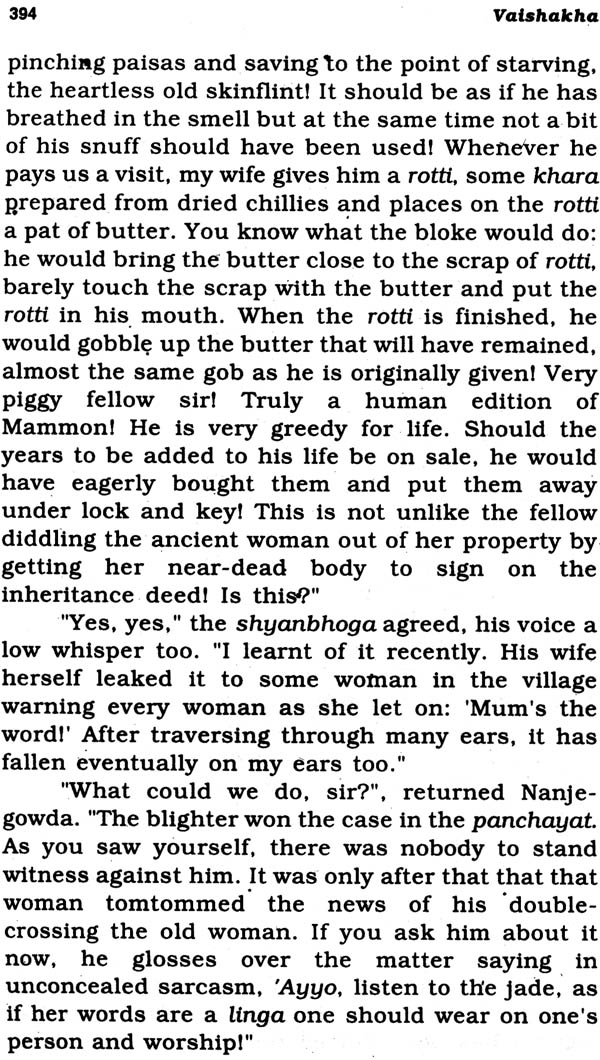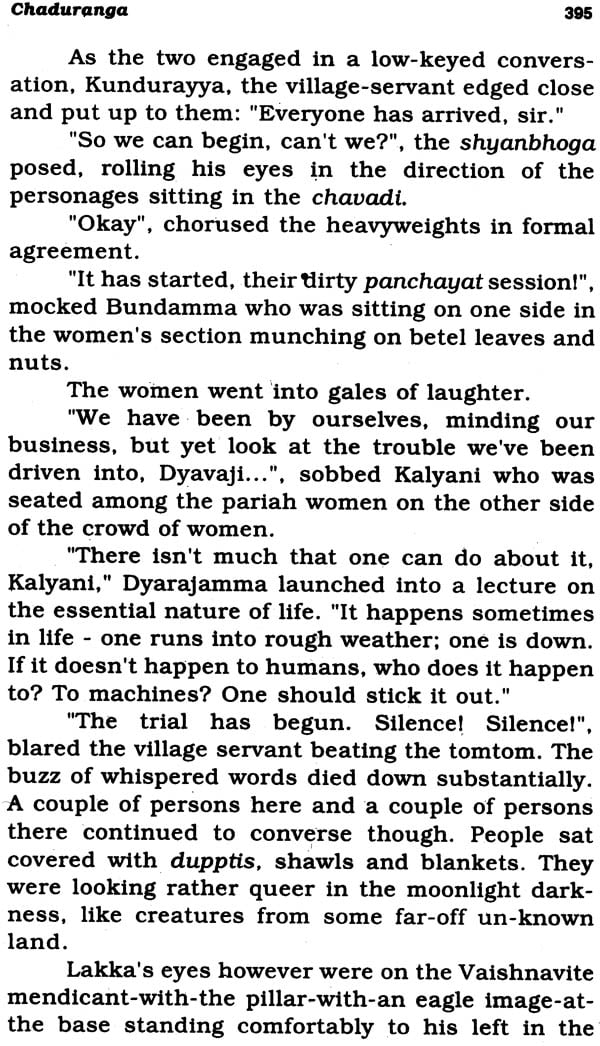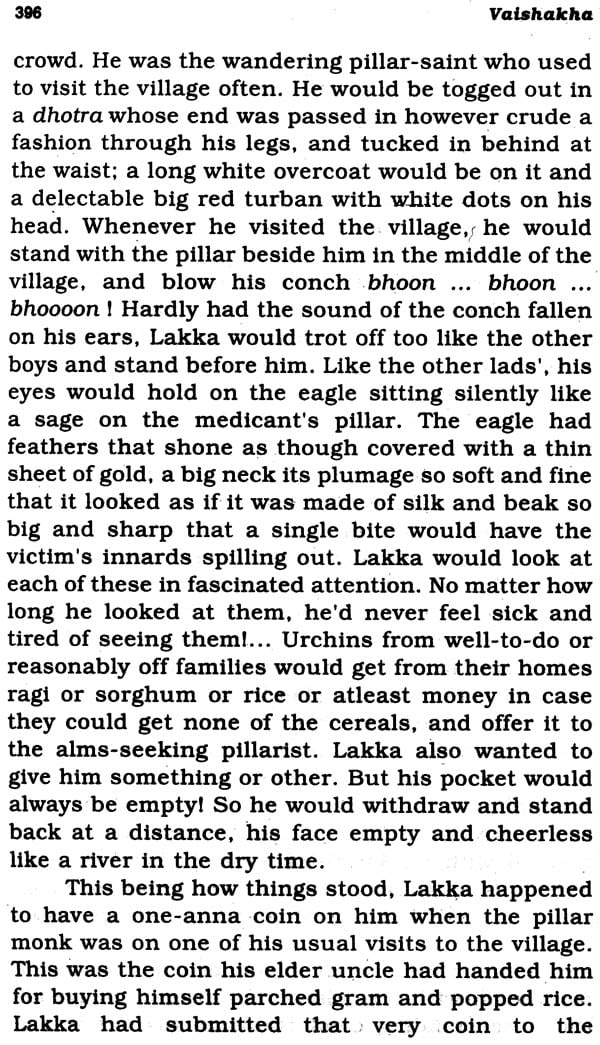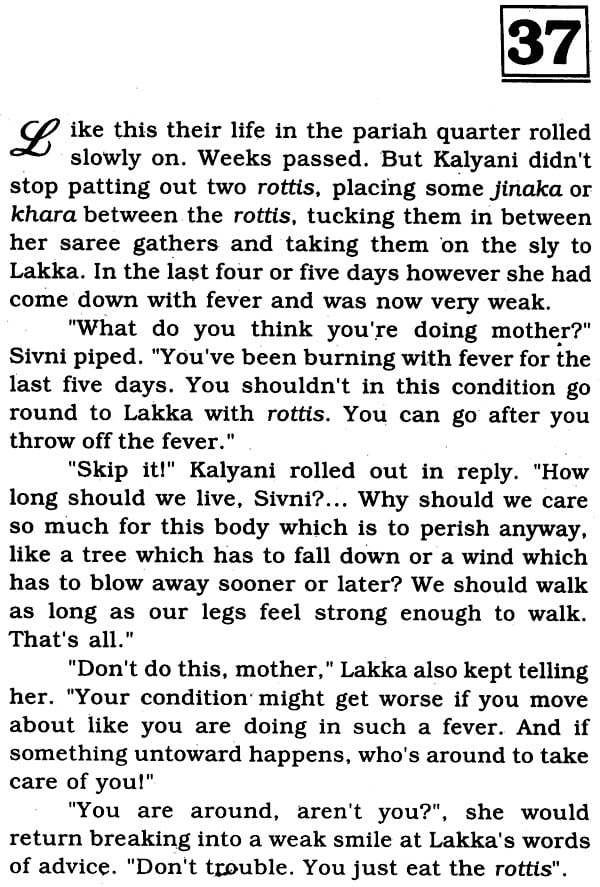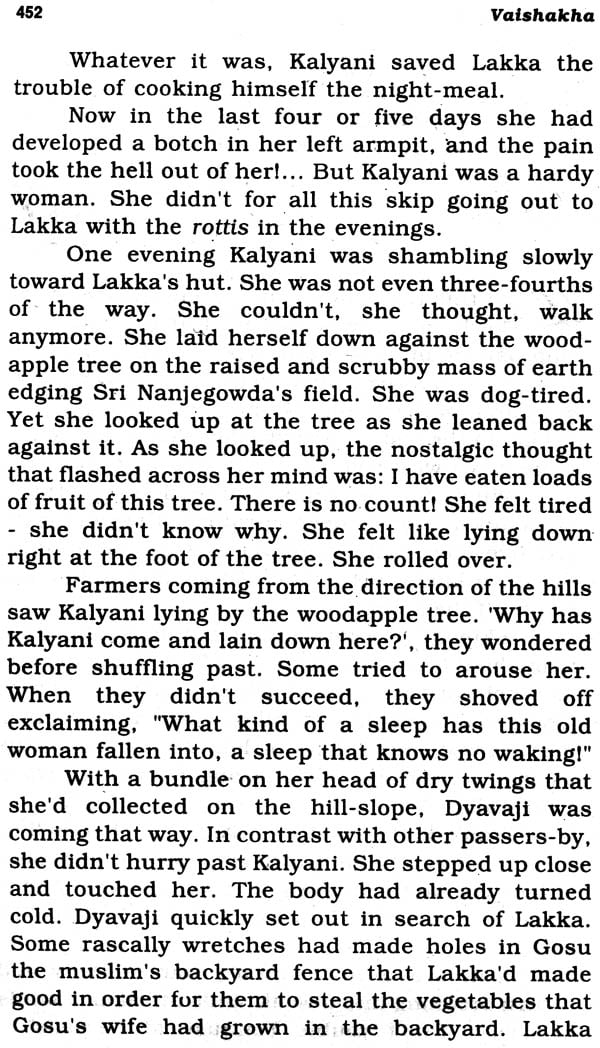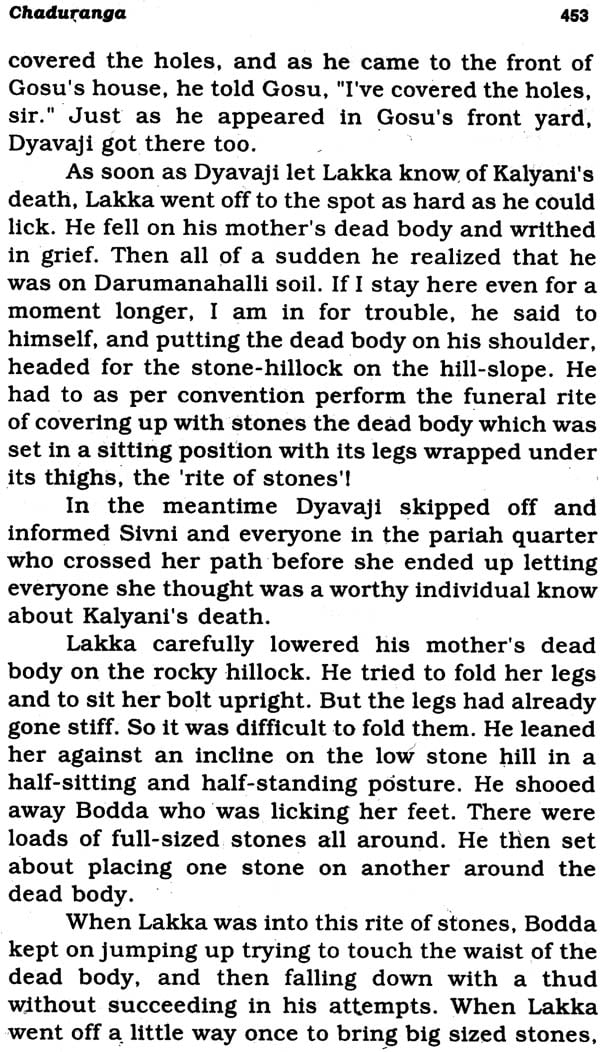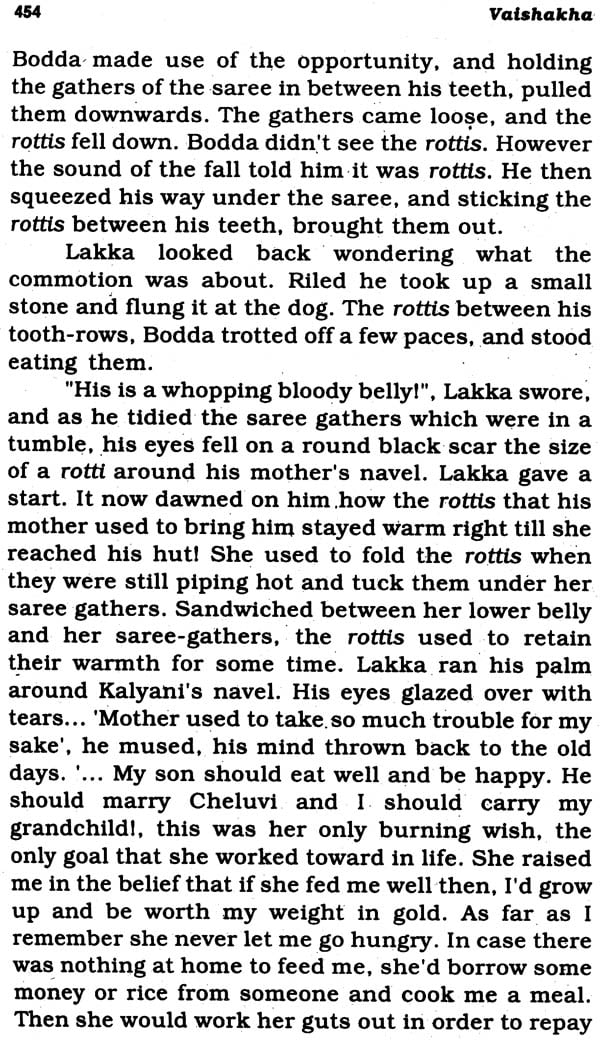
Vaishaka (The Tale of Lakka)
Book Specification
| Item Code: | NAE116 |
| Author: | P. P. Giridhar |
| Publisher: | Sahitya Akademi, Delhi |
| Edition: | 2000 |
| ISBN: | 8126009896 |
| Pages: | 515 |
| Cover: | Hardcover |
| Other Details | 9.0 inch x 5.0 inch |
| Weight | 630 gm |
Book Description
The novel Vaishaka-(The Tale of Lakka) is a hit stodgy and incident — heavy in its weave. Yet in its blending of complexity of detail and vitality of theme, in its delightfuIly graphic depiction of village Karnataka and finally in its suggestion that there is a Way out of the claustrophobia of caste, it is a contribution to Kan nada and Indian literature.
P. P. Giridhar (1951-) is a Reader at the Central Institute of Indian Languages, Mysore. A post-graduate in Linguistics and English Literature and holding a doctorate in Linguistics, he has published both in India and abroad. His grammars of a Angami and Mao Naga have been well-received. Also a promising translator, his English translation of Sri Krishna Aianahallys novel Porasongada Gendethimma, published by Macmillan India, won the American Kannadigas’ special book prize for 1998.
Chaduranga which is the penname of M. Subramanya Rake Urs (1916-I 998), was a stalwart of the ‘Pragatisheela’ (Progressive) Movement in Kannada terature. He wrote eight collections of short stories, three plays and four novels two of which viz ‘Sarvamangala and Uyyale (The Swing) were filmed. A well-known and widely respected figure in the cultural scene of Karnataka he was also into film-making. A. Karnataka State Sahitya Akademi and Sahitya Akademy award winner, he was also honoured with a D. Litt by the University of Mysore.
Chaduranaga (M. Subrahmanyaraje Urs 1916-2998), novelist, shortstory-writer, dramatist and film-maker, wrote just four novels- Sarvamangala (1951), Uyyale (1960), Vaishakha (1981) and Hejjala (1998)-- has carved himself aunique position history modern Kannada novel because the representative character ficitional work. Chaduranaga’s experience literature extensive as his life experience and he active!’ participated in all the literary movements time-- Navodaya. Pragatishila and Navya. his first novel Sarvamanagla which brought him considerable popularity both as novel and film a product of the romantic idealism generated by the Navodaya movement. Uyyale, which followed next, incorporated several features progressive literature introduced into Kannada by A.N. krishnarao, Niranjana and others. Vaishakha, his third novel which won for him Sahitya Akademi award, was a modernstic experiment which also imbibed the spirit of the literature of protest born as reaction to the Navya movement. his last novel Hejjala, published a few months before he died, has strong thematic affinities with Vaishakha but opts premodernistic fictional techniques like the picaresque. The representative of Chaduranaga’s work ficition contitutes its strength as well as its limitation. While it demonstrates his readiness to move with the times and experiment, it is conditioned to a great extent by current ideology.
Vaishakha presents a variety of man-woman relationships but it is not a novel about sex or love, as some critics of the novel have assumed it to be. Similarly, though the novel is set against a fully realised rural setting, it would be wrong to treat it as a specimen of the regional novel. Its central focus is on the growth in the consciousness of a young dalit called Lakka and his struggle to regain his lost innocence in a corrupt environment. It is essential to recognize this fact in order to be able to grasp the true nature of the relationships among the characters, events and the atmosphere in the novel. Otherwise the reader is likely to come to the wrong conclusion that the novel has no central focus or that it is merely a documentation of the life of a rural community.
Two factors contribute to the growth of awareness in Lakka--- his direct experiences and his involved observations of people and events around him. This is so because what happens to him-- the injustice meted out to him and the exploitation he is subjected to-- are not his individual fate but the common lot of many people in his community. Every time something happens to him he sees automatically its connection with what happens to others in his community and feels its impact. Besides, since the walls between the past and future in Lakkas consciousness are in a constant state of collapse, he is able to see truths which are not bound by time.The events that disturb and shock Lakka’s consciousness in the corrupt environment of Daramanahalli form recurring patterns of exploitation and injustice. Nanjegowda and Kengannappa who have the backing of the Jappayyamath, a religious institution, belong to the exploiting class while Tagarur, Adiveppa and Gangi represent the expolited. Lakka is the central point where both the classes converge. The novel opens with a scene where the innocent Lakka allows himself to be compromised with the... illicit liquor business being run by Nanjegowda and others and ends in his punishment and exile. Lakka is not intellectually quipped to develop an ideology of revolutionary class consciousness and finds himself in a continuous state of bafflement throughout the novel.
Though injustices are inflicted on Lakka by his social superiors and he is depriced of the protection of his family and community, he never loses his faith in humanity. He has an inborn love for other human beings and irrpressible zest for life. He is emotionally involved with a lot of people-- his mother, sister Bundanma, Rukmini, Krishna Shastri, Dyavaji, Goussab and a host of others.-- and receives their affection in return. These human bonds give him the strength to cope with life and maintain his mental health against all adversity. He is witness to inhuman acts like Bettayya taking the thumb impression of a dead man on legal documents and the stealing of ornaments by Rudrappa and his gang from a corpse they dig out from its grave but he does not allow these experiences to dehumanise him, Even his banishment which forces him out of Daramanhalli and Gousa sabana Koppalu fails to disturb his innate equanumity and it is with hope in his heart that he sets out in search of an unknown destiny:
As though some deity had entered his spirit, as it used to happen when, during his childhood, he would break into a wild dance at the beating of drums at the colour festivals, Lakka became a child again.
In all the situations where Lakka is a victim of injustice and exploitation he seeks reassurance in signs of innocence. During his trial for example gaze fixed Dasayyas eagle which for him is a symbol of hope and aspiration. Another example his eagerness to join the children in their word-games though he is not a welcome guest.
Vaishakha is highly experiemental in its use of fictional technique and language. Though it. is true that it is the growth of awareness in Lakkas mind and hi search for lost innocence constitute the internal action of the novel, it is important to see that the total perspective of the novel is larger than Lakka’s consciousness. This perspective includes a carefully constructed outer reality and enables the novelist to overcome the dangers which lyrical novels usually face. There is, however, rupture between the outer and the inner realities this novel because of their strong mutual involvement.
As an example of the advantages that the novlist gains through the larger perspective he creates, we may consider the way in which morality functions in the novel, in particular in the sexual episodes involving Krishna Shastri and Rukmini on the one hand and Rukmini and Lakka on the other. After his sexual assault on Rukmini, his widowed daughter-in-law, Krishnashastri develops a strong sense of guilt which leads him rituals like chanting of the Gayatri japa and seif-inflished physical punishment. But his moral does not strike particularly strong and though brings himself to confess his sin publicly in the end, his suffering fails to move us. Krishna Shastri canhardly be compare either Praneshacharya of Samskara or Shrotriya of Vamshavriksha in terms of quality of the moral sense. The episode affects.
Rukmini in a totally different way. She is frightened when she hears strange footsteps in her bed room in the middle of night but after the assault she asks hereself why she did not put up a struggle against the intruder. but the episode hardly creates any moral problems for her. On the contrary it results in awakening her sexual desire
which had been suppressed after the death of her young husband. Her own sexual attack on Lakka, an unexpected as Krishna . Shastry’s attack on herself, is psychologically connected with the earlier episode. She suffers when she finds herself pregnant because of the social consequences of her act and commits suicide when all the escape doors are closed against her. Compared to Krishnashastri’s and Rukmini’s morality, Lakkas is far superior. In spite of his being •a victim he carries the burden of Rumini’s guilt and offers her his protection. This causes him immense suffering but he accepts it willingly. It is obvious that if the reader had operated exclusively from within the central consciousness of the novel he would have missed the complexity of moral levels which it successfully creates.
Chaduranga’s use of language in this novel merits careful analysis. The employment of two different levels of language--- refined and raw-- was not a new device for him since he had used it in his very first novel. But this experiment is far more successful in Vaishaltha. The novelist employs the rural dialect, natural to Lakka’s class in the rural community, in presenting his interior, thus ensuring total authenticity but when he steps outside it he employs a variety of other linguistic codes in order to realise the complexity of the social life he is dealing with and to establish a strong realistic base for his narrative, Several critics--- G. H. Nayak and P. Ramarnurthy in particular-- have commented on Chaduranga’s use of symbols in the novel. These have enriched the meaning of the novel by adding a poetic dimension to it. The vultures feeding on the dead body of a pregnant woman, for example, is a powerful symbol of the pervasive cruelty in the novel. But the Garuda, belonging to the Dasayya, a childhood friend of Lakka, balances this vision through its symbolism of hope and aspiration. There are a variety of other birds in the novel which are equally symbolic. The small bird associated with Uppulashetty, which acquires new feathers, for instance, is an obvious symbol of rebirth. The ants and the elephants appearing in the novel reinforce its positive vision. The small ants which attack a big serpent show that even weak can overcome the strong and holds out hope for the downtrodden and the herd of elephants symbolise the continuity of life on earth.
